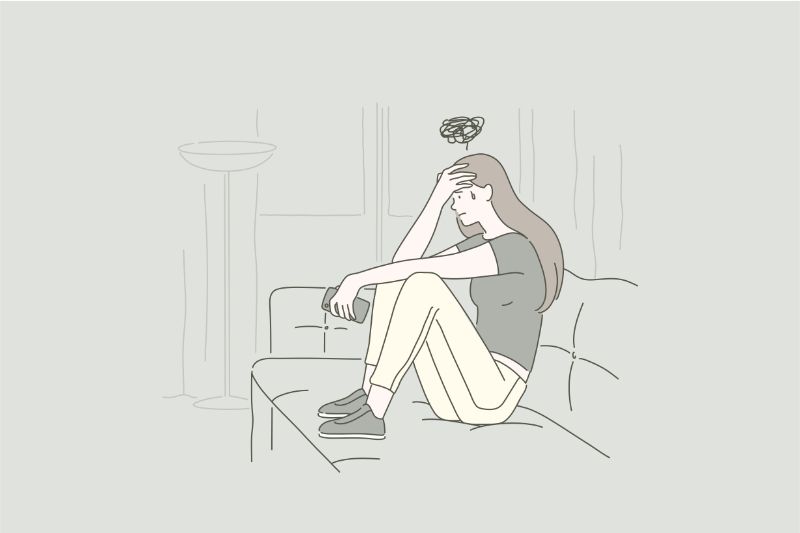Conquering Youth Mental Health – A More Open Approach
Mental health has been long stigmatized as a taboo subject in many cultures. “It’s all in your head.” “You will grow out of it.” These statements, although coming from people with good intentions, are not empathetic towards students who deal with pressure, stress, and traumatic experiences, more so today. Ethnic Media Services Executive Director, Sandy Close, shares that if an 8-year-old committing suicide is not eye-opening enough, then what is?
We already had a looming mental health crisis before the COVID-19 pandemic stole the show. With suicide, substance abuse, depression/anxiety rates increasing for the last two decades, experts in the field finally raised alarm bells earlier this month.
Today we see the unprecedented repercussions of the Covid-19 pandemic had an enormous impact on teen and young mental health. U.S. Surgeon General Vivek Murthy released an advisory, Dec. 7, noting that symptoms of depression and anxiety have doubled during the pandemic, with 25% of youth experiencing depressive symptoms and 20% experiencing anxiety symptoms. Emergency Room visits for youth experiencing psychosocial issues have also jumped by 20%.
In a briefing hosted by Ethnic Media Services, in collaboration with the Sierra Health Foundation and the California Department of Public Health, health experts share eye-opening insights on what our youth are facing today and the steps we can take going forward to build resilience and a better future for all.

Speakers include:
- Michelle Doty Cabrera, Executive Director, County Behavioral Health Directors Association
- Lori Turk-Bicakci, Ph.D., Senior Program Director for KidsData, an initiative of the Population Research Bureau
- LaTonya Wood, Ph.D., Director of Clinical Training – Psy.D. Program, Graduate School of Education and Psychology at Pepperdine University
- Ulash Thakore-Dunlap, MS, Marriage and Family therapist and board member, My Sahana
- Gabii LeGate, Director of Operations, Blossoming Minds
The Current Situation
Every expert in this briefing echoed one message: the youth is facing a significant mental health crisis.
Some eye-opening statistics, pointed out by Michelle Doty Cabrera: a reported increase in acute mental health crisis issues 2-3 folds according to the County Behavioral Health Safety Net. Children as young as 8 years old are being hospitalized due to suicidal ideation.
To give a clearer lens on the drastic impact of mental health and the looming crisis, Dr. Lori Turk-Bicakci presented data collected by KidsData – Population Research Bureau. The data represents the grim reality of the youth. Suicide rates for 15–24-year-old children constantly increased from 2007 to 2019, before the COVID-19 pandemic.
![]()
A quote by Karen Marcus, M.D. Psychiatrist, Alta Bates/Herrick Hospital, outlines the impact of the COVID-19 pandemic on youth mental health.
“This pandemic has, unfortunately, increased the prevalence and intensity of mental health problems in our young people. In our hospital, we are seeing more adolescents with amplified symptoms of depression, anxiety, eating disorders, and other mental illnesses. Many of these patients appear to be responding to the additional psychological, social, and financial stress that the pandemic has placed on families and in schools. It really does feel like a crisis.”
This statement can be attributed to the sharp increase in substance/drug overdose-related deaths in California during the 2014-2020 timeline. There was a sharp increase in overdose-related deaths in children aged 15-19, meanwhile, 10–14-year-old children went from 0 overdose deaths to 14 in 2020.
![]()
Emergency department visits also increased in 2020 when compared with 2019 statistics. Statistics show that the proportion of children ages 5-17 going to the emergency for mental health concerns increased significantly in 2020. When looking at ER visits based on suspected suicide attempts began to increase among adolescents aged 12–17 years in May 2020, especially among girls.
![]()
![]()
These trends aren’t constricted to a single population of kids. Experts point out that many ethnic minority communities – African American, Hispanic, Asian, etc., the LGBTQ+, and the White community are collectively fighting mental health issues.
One interesting point brought up by experts was the gender disparity when it came to suicide rates. What was witnessed is that there were higher rates of suicide/self-harm attempts within females but higher rates of actual suicide within males. Dr. Wood and Dr. Thakore-Dunlap both agreed with the affirmation when reflecting on the African American community and the AAPI community.
In a survey conducted in July 2021, parents in various ethnic communities were concerned for their children’s mental health. The kicker: it is difficult to access professional help for depression and other mental health issues. The average wait time is 2-3 months for specialists as they are being inundated with referrals.
![]()
Why is this happening?
First and foremost, we must consider that every person is different and reacts to changing situations differently. 2020 has been a year with drastic changes from what we were accustomed to. New challenges rose and an increase of societal issues also played a role. While some can adapt to changing situations very quickly, many will face hardship.
Dr. Latonya Wood points out that these differences can be seen from an ethnic lens. African American youth were twice as likely to be depressed and commit suicide when compared with White youth. Dr. Wood says that African American youth deal with adverse childhood experiences, higher rates of substance/drug abuse, interpersonal trauma, and racism. All these factors reflect on symptoms they exhibit when they have depression or anxiety or other mental health issues.
A similar pattern was being pointed out by Dr. Ulash Thakore-Dunlap when talking about the AAPI community. According to the CDC, Suicide is the leading cause of death for individuals aged 15-24 years in the AAPI community. AAPI students are also victims of racism and are in constant fear for their well-being as well as the well-being of their family and friends.
Gabii LeGate also shares how the LGBTQ+ community has increasing rates of mental health issues: more have considered suicide as an option in 2020 compared to 2019. This can be attributed to many factors – discrimination from outsiders and even loved ones. Dismissal of their identity by their loved ones – family and/or friends – plays a huge role in the individual’s mental health.
From a broader perspective, Michelle Doty Cabrera points out how environmental changes played a role in increased mental health problems. Students transitioning from virtual to in-person learning increased problems even though it was believed otherwise. As properly framed by Cabrera, in-person learning is like a two-edged sword where in-person learning provides emotional and social support with a communal feeling and virtual learning isolates the student and encapsulates them at home. However, we see higher rates of crisis right now with in-person learning and there is no clear answer by the experts.
Siliconeer team has seen South Asian teens going through a very traumatic experience as they go back to school. It seems like they are being overburdened by their workload and teachers have gotten considerably tougher on students with a lack of empathy compared to previous years. Lack of proper administration and a lack of a warm, welcoming environment in an educational setting is a recipe for a mental health catastrophe for teenagers. Couple the academic pressure with pressures and stresses at home and with friends, and any teenager will most probably crack.
We also see an increase in substance abuse with easier access to drugs on the streets. If laced with fentanyl, there will be an increased risk of death from the overarching opioid crisis. Concurrently occurring mental health and substance abuse impacts teenagers significantly.
Cabrera brings out an important distinction: children aren’t simply little adults clinically, emotionally, and treatment-wise. Children are different and require different resources and treatments. Identifying emotional disturbances is also complex with children, especially with teenagers. They rely on adults in their life to seek care and primary care physicians don’t have the proper resources to screen for behavioral care.
What is the path going forward?
De-stigmatizing the conversation! Every expert resonated that making mental health a healthy conversation rather than making it a ‘taboo’ subject and attributing it to shame, is the first step to the betterment of the youth’s mental health. As mentioned earlier, children depend on adults in their life for care and support. They need a strong support system so they can be comfortable sharing their mental health problems and asking for medical help.
Providing access to culturally congruent services can also have a very positive impact on behavioral care. Educating specialists on various ethnic cultures and linguistics in respect to their perspective on mental health and mental health care can open new opportunities and allow a more comfortable approach to mental health. Educating the stigmas and stereotypes associated with seeking help can help eliminate the cognitive dissonance that specialists and patients/families face today. Also knowing the different traits exhibited by youth from different backgrounds can allow for a more accurate diagnosis and treatment.
The good news is that there is awareness for this issue and help is available. With increasing funding, awareness, and openness to mental health, we see actions being taken to assist in the fight for better mental health.
For example, Medi-Cal is required to provide timely access, transportation, and interpreters, for health services. There has been an increase in educational/support resources from the state. TikTok, Instagram, and LinkedIn have been great avenues for people to open up about their mental health and receive significant support. The advent of technology and allowing virtual access to care has greatly expanded through the pandemic. With telehealth, the youth can connect with care providers when physical access is limited. This approach, however, has its issues – namely privacy and connectivity concerns.
There is hope. Every expert agreed that there is hope in this situation. With proper intervention, we can actively listen to the young people, empathize with them, and start acting. Being kind to others and understanding that mental health problems aren’t always clearly expressed can make a big difference. Having productive conversations, early intervention, and stronger support systems can help bring resilience and limit any long-term effects. The ultimate message is to reach out!


